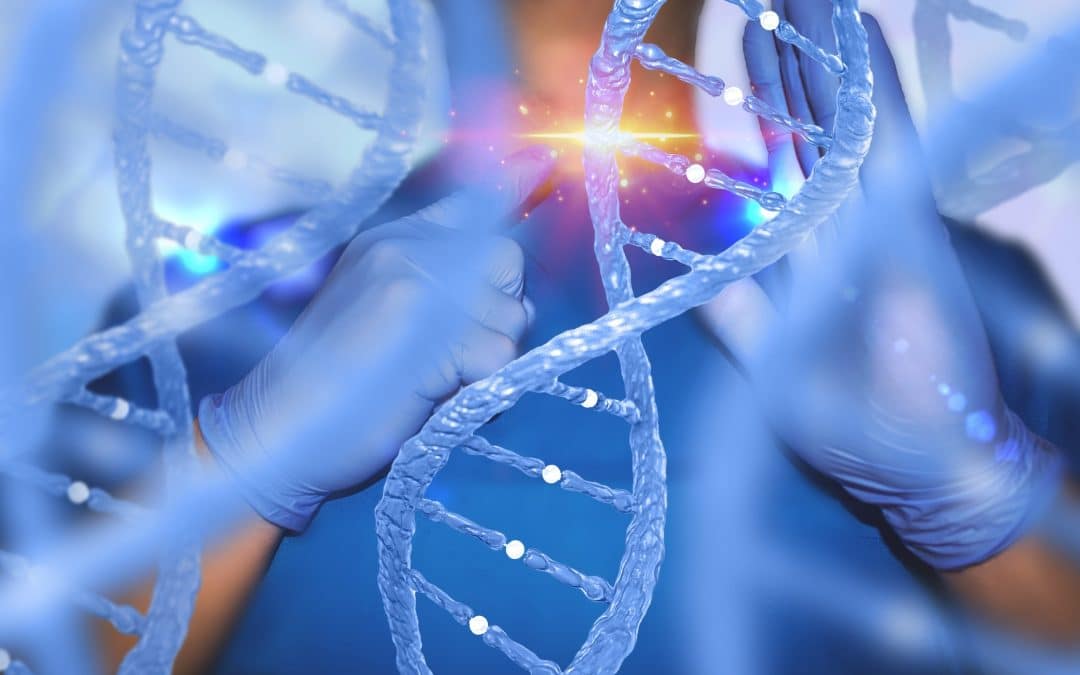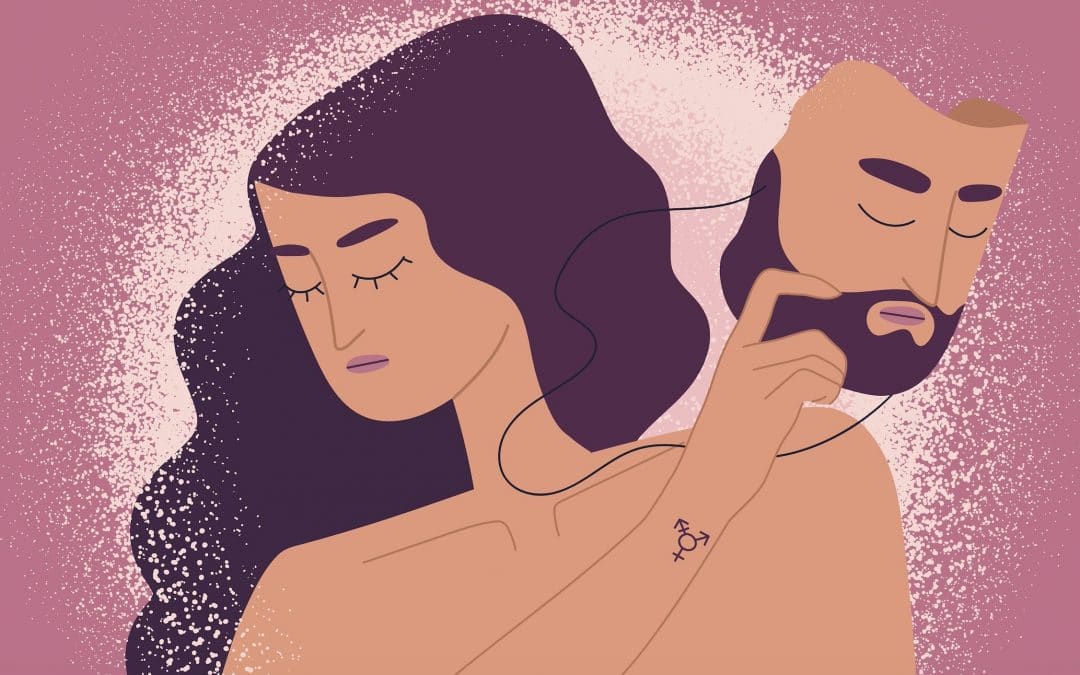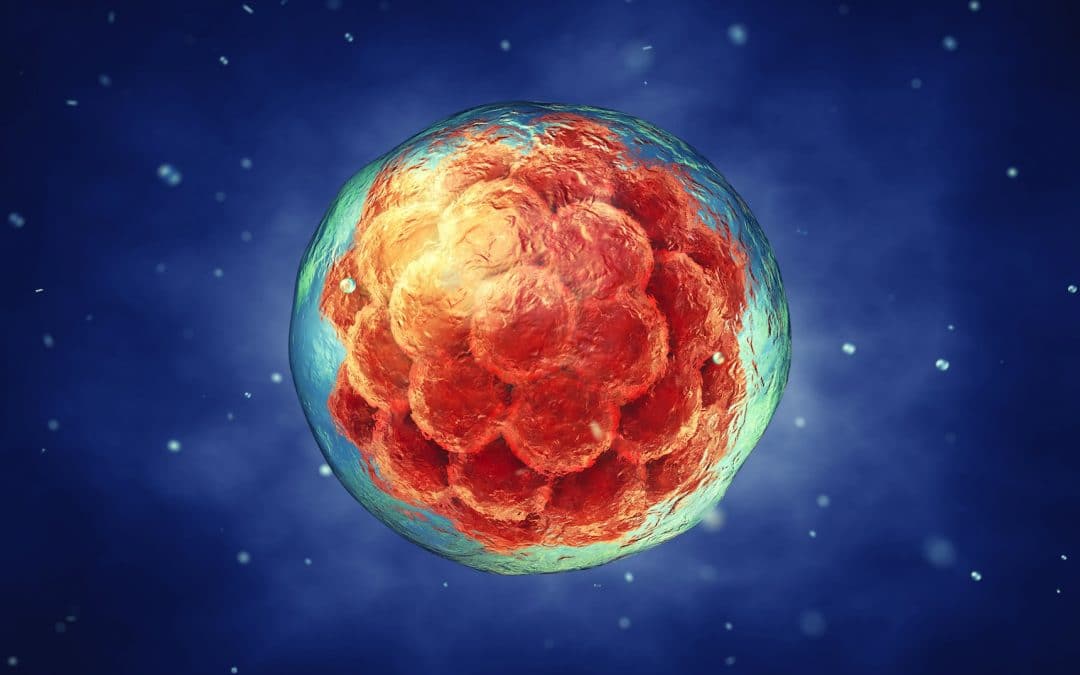
by Alliance VITA | April 16, 2021 | News, CRISPR
Sickle cell anemia is the most widespread genetic disease in the world, and very prevalent in France where it affects one child for every 1900 births.
The name of this disease is derived from the “sickle” shaped appearance of the red blood cells caused by a defect in the cell’s hemoglobin. Hemoglobin is the main protein in the red blood cells which carries oxygen from the lungs to the tissues and helps eliminate carbon dioxide. In sickle cell anemia, the abnormal hemoglobin results in red blood cells that are fragile and rigid, leading to anemia, painful vaso-occlusive seizures and an increased risk of infection.
Sickle cell is an inherited genetic disease with recessive autosomal transmission, meaning that for a child to be affected by the disease, he must receive a mutated gene from each parent. A person with a single mutated allele is a non-symptomatic healthy carrier. If both parents are healthy carriers, there is a risk of one in four of having a child with sickle cell anemia. However, if one parent has sickle cell anemia and the other is a healthy carrier, the risk increases to one in two.
There are treatments available, and neonatal screening can result in a better management for those who are affected. Nonetheless, new research shows that genome modification using the CRISPR-Cas9 technique can treat the disease at the root cause, by repairing the defective gene where the red blood cells are formed.
In 2018, early experiments suggested that a clinical treatment for sickle cell using CRISPR-Cas9 appeared promising. Now the FDA (Food and Drug Administration) has given approval to scientists in San Francisco, Berkeley and Los Angeles (UCLA) to jointly collaborate on launching the first tests in humans based on CRISPR-Cas9 gene therapy. Using the patient’s own stem cells, these “genetic scissors” directly correct the mutation in the gene responsible for sickle cell anemia.
The procedure requires for some of the patient’s hematopoietic stem cells — the bone marrow cells that generate all the body’s red blood cells — to be harvested in order to undergo gene editing (with CRISPR-Cas9) outside the body. After these cells are removed, the remaining bone marrow is destroyed with chemotherapy. Finally, the CRISPR-modified or “correctly repaired” stem cells – are reinfused in the hope that they will develop and flourish in the bone marrow to generate normal red blood cells.
This harbors newfound hope for therapeutic progress using CRISPR-Cas9.

by Alliance VITA | April 16, 2021 | Gender, News
The press is speculating that French courts may soon render an unprecedented decision concerning how civil registers and filiation may be affected in the event of changing one’s biological sex.
The Court of Appeals in Toulouse is currently hearing the case of a man who has been married since 1999, and who later had a sex change operation. In 2011, his civil registration (birth certificate) was modified to reflect his gender “reassignment” as a female.
Before his male genital organs had been removed, the couple conceived a little girl, born in 2014, and the civil registry listed him as the child’s father.
According to the couple’s lawyer, Clelia Richard, they took legal action because the transgender woman (the biological father) wants to be “recognized as the mother on the child’s birth certificate.”
The court has already suggested that the couple could file for adoption since the law enacted on May 17, 2013 makes this a legal option for same-sex couples.
Nonetheless, the couple has continued their court battle, with their lawyer explaining that it is “unfathomable for her to adopt a child she had conceived.”
In 2016 their request was denied by the Magistrates’ Court in Montpellier, although in 2018 the status of “biological parent” was granted by the Appeals Court. However, this latter ruling was overturned by the Court of Cassation, on the grounds that according to French law only the terms “mother” and “father” are allowable on birth certificates.
In June, the Toulouse Court of Appeals is scheduled to deliberate on this case and deliver the final verdict. The State Prosecutor has already given an endorsement for mentioning the transgender person as a second “mother”. He advocated the best interests of the child so that the little girl can “live a family life in accordance with the gender identity of both parents.”
Indeed, if the court rules to allow the biological father to be named as the child’s second “mother”, (in addition to the birth mother), such ruling would be the first one in Europe. The European Court of Human Rights (ECHR) has examined similar cases from Germany and the United Kingdom but has until now maintained that the parentage should be establised based on the parents’ original biological sex.
The scales of justice are hanging in the balance. Will the biological data on the child’s birth certificate be upheld or obliterated? The court’s decision is expected to be rendered in September.

by Alliance VITA | April 8, 2021 | News, End of life, Euthanasia and Suicide, handicap
On April 8th while French MPs were examining a new bill for euthanasia, the spokespersons of the collective “Relieve Suffering without Killing” held a press conference deploring the indecency of decriminalizing such an act.
They argue that if putting a person to death is legalized, it would not only signify a radical shift in the doctor-patient relationship, but it would also undermine the trust between healthcare workers and patients. Trumendous progress has already been made to accompany those who are suffering and more progress should be encouraged, instead of proclaiming a volte face.
The popular French film, “Untouchable” is based on the true-life story of Philippe Pozzo di Borgo, a quadriplegic aristocrat, who made a solemn appeal at the press conference: “Can’t you see the mounting pressure – even the coercion – in a society which designates some of its’ citizens for death : those individuals who are most frequently shunned, those who suffer extreme pain, those who are very isolated, those who are extremely disfigured, those who are particularly affected by others’ pity, – and as some are already contending – those who cost the most? »
Founder of Alliance VITA’s End-of-Life service, and acting as a spokesperson for the collective “Relieve Suffering without Killing” Tugdual Derville declared:
“This is a very bad message that the Government sends to the French who are already worn-out by the COVID crisis, especially when the plan for developing palliative care has finally been announced but not yet been implemented, and the law for Advanced Age and Autonomy has yet again been postponed. Using Belgium’s euthanasia law as a reference for the new bill is also very awkward, since the Belgian law continues to drift from so-called “free choices” to uncontrollable practices that exert pressure on the vulnerable, for example on depressed people, who are by no means at the end of their life. Belgium euthanasia laws illustrate that opening Pandora’s box for “exceptional cases”, ends up gradually changing the country’s mindset so that more and more vulnerable people now regard the use of euthanasia as a duty.”

by Alliance VITA | March 26, 2021 | News, Disabled, Euthanasia and Suicide
Less than five years after euthanasia was decriminalized in Canada, drastic changes are now being implemented. Euthanasia, referred to in Canadian legislation as “medical aid in dying” (MAID), will be extended to anyone with a serious and incurable condition who wishes to die.
On March 17, 2021, the substantial changes in Bill C-7, approved by the Federal Parliament last February, officially came into force, thereby significantly extending the practice of euthanasia.
Removing end-of-life criteria + proposing euthanasia to people with disabilities
First of all, the criterium of a “reasonably foreseeable death” has now been abolished. From a medical standpoint, the only requirement remaining is to have a serious and incurable illness and unbearable suffering (determined by the patient himself).
In practice, this means that anyone who is physically disabled or has a chronic illness is now eligible for euthanasia. In this respect, Canadian law is de facto comparable to “death-on-demand” for any sick person, and it compels medical professionals to comply with the patients’ requests.
For the moment, the new law does not include euthanasia for persons with mental illness, which in itself is currently “not considered as an illness, nor an affection nor a disability”. Nonetheless it will be subject to independent review in the coming weeks, thus indicating that this prospect has not been ruled out. In any event, extending euthanasia to those with mental illness is already planned for 2023.
Same day death: no reflection period
Secondly, when natural death is reasonably foreseeable, the new law has dispensed with the 10-day waiting period, between the time of the euthanasia request and the lethal injection. Therefore, as the collective movement of 888 physicians laments: “under the new bill, an individual whose natural death is considered to be ‘reasonably foreseeable’ could be diagnosed, assessed and euthanized all in one day.” In other words, “your worst day could be your last day.”
Euthanasia on unconscious patients if previously requested
Thirdly, the law will now provide for euthanasia without contemporaneous consent. Thus, when one cannot express his/her final agreement (e.g., if unconscious) and if death is reasonably foreseeable, euthanasia may legally be practiced, whenever the patient has given advance directives to that effect, or whenever a self-administered lethal injection has failed.
UN experts warn of abuses
This rapid and substantial shift to extend euthanasia is diametrically opposed to providing adequate physical and psychological support for those who are disabled or chronically ill. As three United Nations experts recently pointed out, this growing trend towards euthanasia may exert pressure on those who are disabled and/or elderly to end their lives prematurely.
Finally, the Canadian parliament is already considering how this reform could possibly be extended even further. In the coming days euthanasia legislation will be focused on “the eligibility for mature minors, advance euthanasia directives, mental illness, palliative care and protecting Canadians with disabilities.”
Better support urgently needed for the most vulnerable
In their press release issued on March 19th, the citizens’ movement Living with Dignity and the collective of doctors against euthanasia insist that since euthanasia is wrongly considered as a palliative care, “we must work to promote customized care for all types of suffering” by improving “mental health care, by providing assistance to those with disabilities (employment, housing, etc.), those with chronic disease, regardless of age, and by making healthcare and home assistance available, as well as offering support for family caregivers.”

by Alliance VITA | March 26, 2021 | News, Human embryo research
Can researchers artificially produce a product resembling a human embryo in a test tube, without using eggs or sperm or undergoing fertilization?
For the past several years, some research laboratories have been experimenting on animal models.
And now experiments are being performed on human cells. Although still being examined, articles 14 and 15 of the pending French bioethics bill, could potentially allow this type of research. These experimental protocols using reprogrammed adult human cells (“iPS” or induced pluripotent stem cells) and human embryonic cells would not necessitate authorization by the Biomedicine Agency, but only a mere declaration, prior to implementation.
Already in 2018, scientists from Cambridge published their initial results, and this week Nature has published the results from two other research labs also working to create in vitro structures called “iBlastoids”. Since these artificially structures are designed to “imitate” human embryos, the name is derived from “blastocysts”, the scientific name given to human embryos at approximately five days old.
The American and the Australian research teams each used different techniques. In Australia, Professor José Polo from Monash University headed the research group working with adult skin cells known as fibroblasts. These cells were reprogrammed to re-acquire their original “pluripotency” (the cell’s ability to differentiate into multiple other cell type and therefore form most body tissues). The resulting induced pluripotent stem cells are commonly abbreviated as iPS cells or iPSCs.
The second group of researchers headed by Jun Wu at the University of Texas, also used iPS cells as well as human embryonic stem cells, harvested from embryos produced by in vitro fertilization (IVF) which had been donated for medical research.
When cultured in adequate conditions, these cells multiply and self-organize into complex cellular structures. For the 3D cell culture system, a support matrix of plastic plates with tiny holes is used to aggregate cells by sedimentation, while controlling their number.
These studies have confirmed that cells “communicate” with each other since they self-organize into cellular structures composed of different cells: a layer of external cells (representing a future placenta, if fertilization and “normal” development were to take place) surrounding a fluid-filled cavity containing a mass of “embryonic” cells.
Nonetheless there are significant differences with naturally occurring structures. For example, the artificial ones contain cells which are not present in real blastocysts. In 2018, French researcher Nicolas Rivron, director of one of the labs at the Austrian Academy of Sciences, succeeded in generating the first mammalian blastocyst structure in a mouse model. However, this specialist estimates that it will take “10 more years to create iblastoids that significantly resemble human blastocysts.”
These structures cannot be sustained for long, thus, at the present stage of research it seems implausible that they could be implanted in a woman’s uterus. Even if experiments progressed that far, the procedure is currently strictly forbidden in France. Experiments have already been performed using the animal model to implant blastoids in the uterus of a mouse. Although the vessels did connect to these pseudo-embryonic structures and the mouse’s immune system interacted with them, there were anomalies observed in these structures as early as four days after implantation.
Those in favor of this research claim that there are several advantages to these experiments. These structures could provide new understanding of the early development of the human embryo. They could also be used as models to test the toxicity of molecules, and for understanding events that occur at the beginning of embryonic development such as spontaneous miscarriages or malformations due to certain drugs or pollutants. The obvious limitation is that they are grown in an artificial environment and are not “normal” embryos.
These experimental models circumvent the ban on creating embryos for research and are presented as an alternative to using supernumerary frozen embryos, especially the model which only uses reprogrammed adult cells. Anyhow, the assumptions made using these models “will need to be validated on human embryos, therefore it will not replace research on embryos donated to science,” says Teresa Rayon, a biologist at London’s Francis Crick Institute.
According to Hervé Chneiweiss, chairman of the ethics committee at “Inserm” (French National Institute of Health and Medical Research): “this new category of living matter generated by human beings is a grey area” in the legislation.
In the pending bioethics bill in France, section 17 provides for a significant semantic change in Article L. 2151-2 of the Public Health Code. This article currently states that “It is strictly prohibited to perform in vitro embryo conception or clone human embryos for research purposes.” Plans have already been foreseen to add 5 descriptive words to the word “embryo”: “human by the fusion of gametes”. This is a tell-tale sign that the legislation will soon allow research on this type of “embryo” obtained without the fusion of gametes.





